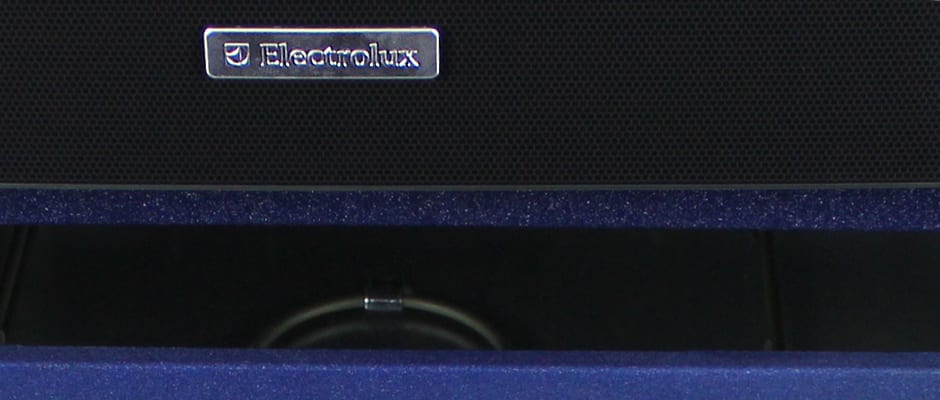Pros
Cons
Introduction
While its rangetop did exhibit a great temperature range and had no weak burners—all under twelve minutes to boil six cups of water—there weren't any effective power burners either.
The conventional oven definitely had some issues averaging the target temperatures, but the oven's broiler and convection mode had some of the best results we've ever seen.
This range seems to have very little that's just average about it, with some impressive aspects and some unimpressive ones. Before reading this review, think about what you need in a range. This may have it, or it may not.
Design Overview
{{section_header}}{{section.name}}{{/section_header}}
The {{product.name}}'s design certainly borders the mid-end and high-ends. Eschewing the typical design language of $2,000+ machines—stainless steel everything, no drawer, and industrial style—{{product.brand.name}} shoots for a post-full-stainless high-end range with more black than stainless finish.
Front
{{section_header}}{{section.name}}{{/section_header}}
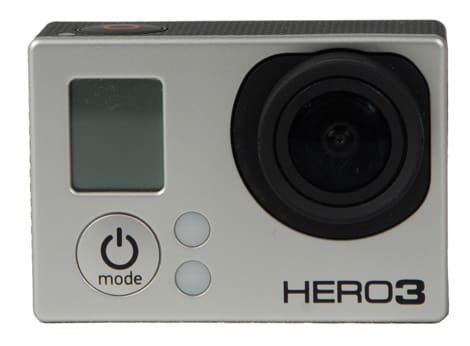
Range-top
{{section_header}}{{section.name}}{{/section_header}}
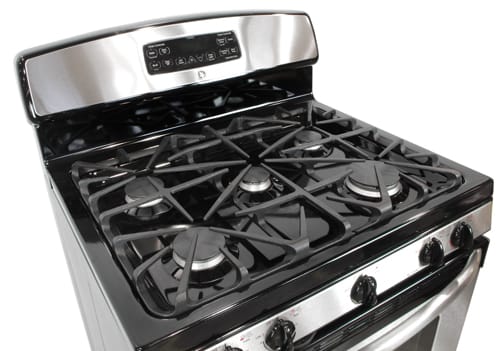
Upper Oven
{{section_header}}{{section.name}}{{/section_header}}
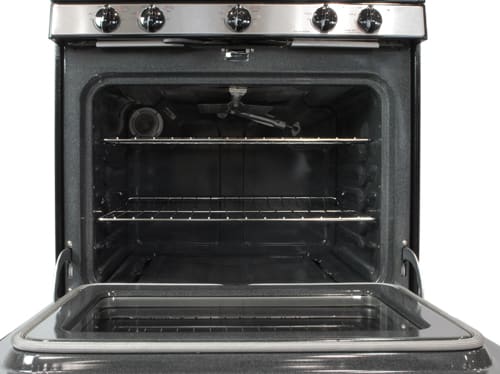
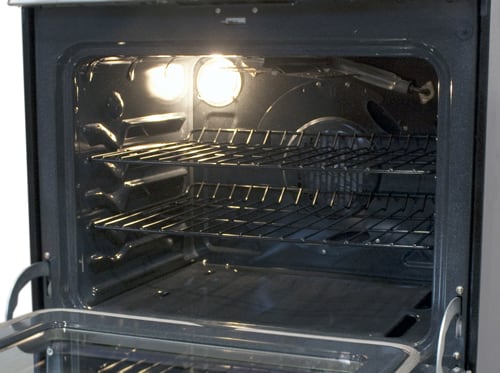
Broiler
{{section_header}}{{section.name}}{{/section_header}}
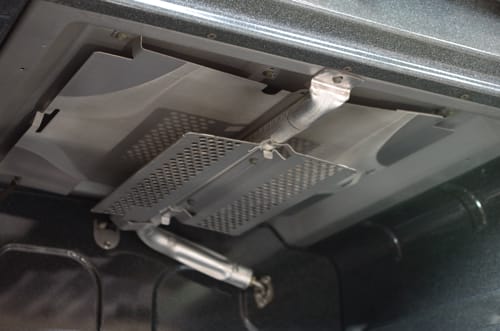
Warming Drawer
{{section_header}}{{section.name}}{{/section_header}}
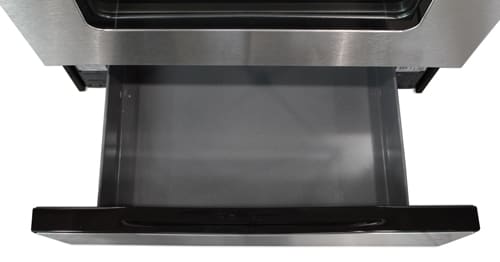
Cooking Performance
Every test result has us raising something—whether it's the glass or the eyebrow. There were hardly no middling results. The convection oven was absolutely superb, but there weren't any fast-boiling rangetop elements. The broiler was great, but the oven temperatures didn't quite match up with the dial. An odd mix of competent and incompetent indeed.
{{photo_gallery "Primary Oven Keep-Warm Ramp-up", "Primary Oven 350F Ramp-up", "Primary Oven Max Ramp-up", "Secondary Oven Convection Ramp-up", "Oven Temperature Variance", "Range-top Water Boil", "Range-top Temperature Range"}}
Range Performance Overall
{{section_header}}{{section.name}}{{/section_header}}
The {{product.name}} takes advantage of the electric edge, exhibiting a superb range of temperatures that gas can't provide due to the minimum temperatures of natural gas or propane combustion. Unfortunately, the cost of this is control, and there is no flame to see in an electric element. Electric ranges also lag a bit after adjustment unlike the instant reduction of flame in the gas. It's a trade off that each user must consider.

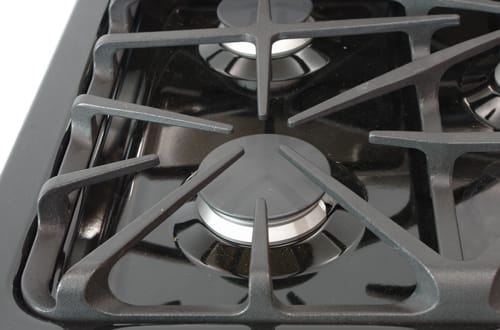
Water Boiling
{{section_header}}{{section.name}}{{/section_header}}
The water boiling was a bit of a disappointment. While we do see a great average boiling time—there aren't any weak burners—the {{product.name}} doesn't have any very speedy boilers, with the front two boiling six cups in eight minutes. Sure, the rear elements can boil six cups in eleven and half minutes—awesome for the b-team—but most folks would appreciate a fast boiler.
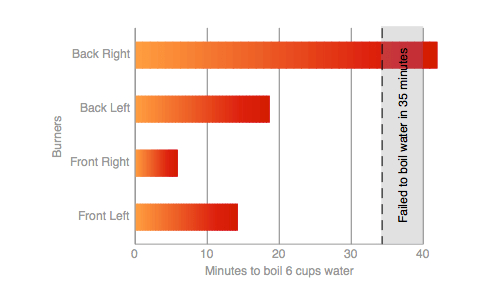
Don't try to boil with the back right simmer burner.
Low Temperature Cooking
{{section_header}}{{section.name}}{{/section_header}}
Here we found excellent simmering results, as every element could provide gentle heat under the exceptional temperature of 90°F. Good for simmering small quantities of liquids, melting chocolate without a double boiler, and much more!
Range-top Temperature Range
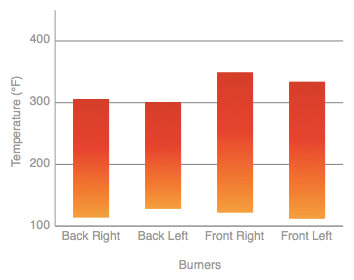
Maximum and minimum heat settings for each burner: The hottest burner reaches about 400F.
High Temperature Cooking
{{section_header}}{{section.name}}{{/section_header}}
The searing situation makes it possible to handle whatever high-temperature job you need done. Our sensors recorded temperatures no lower than 527°F: completely satisfactory for making that satisfying hiss from the skillet.
Overall Oven Performance
{{section_header}}{{section.name}}{{/section_header}}
While the oven preheated to 350°F in under twelve minutes, we weren't too happy with much else. Temperature consistency, temperature target accuracy weren't very impressive for the conventional oven. Fortunately, this oven has a plan B.
{{product.manufacturer_specs['Primary Oven Photo']}}{{photo_gallery "Primary Oven 350F Ramp-up", "Primary Oven Keep-Warm Ramp-up", "Primary Oven Max Ramp-up"}}
Target Temperature Accuracy
{{section_header}}{{section.name}}{{/section_header}}
Set to the keep-warm temperature of 170°F and 350°F, the oven consistently stayed far above the designated temperature. The average temperatures we saw for those two were 200°F and 369°F, twenty and thirty degrees above the proper temperature. This is a bit troubling. The maximum setting was better, though still hot, at 562°F against the appropriate 550°F. We advise prospective buyers to invest in a thermometer if they go with this range. Fahrenheit and Celcius degrees are preferable to Electrolux degrees.
However, all this changed when the convection fan was activated. Set to 350°F, the oven hit an average temperature of 350.5°F, spot on indeed. The convection fan also circulated the air providing more even cooking and no oven hot spots, so the deficiencies of the conventional oven may not be so grave considering this alternative.
Temperature Fluctuation
{{section_header}}{{section.name}}{{/section_header}}
The temperature fluctuation for these inaccurate temperatures wasn't good at 170°F, but it was excellent at 350°F. Though it was based around a temperature almost 20°F above the target, the temperature went only 10°F below and 17°F above the average. A silver lining indeed. The maximum temperature setting had the oven into the 580s as well as falling to 533°F. Not great, but when you're over 500°F, very hot vs. very, very hot may not make such a difference.
When we activated the convection fan, we found extremely satisfying results and one of the finest variances we've seen: the oven went just eight degrees above 350°F and six below. This is incredible, and we hope chefs will be able to take advantage of this supreme performance in new and interesting ways to cook delicate food.
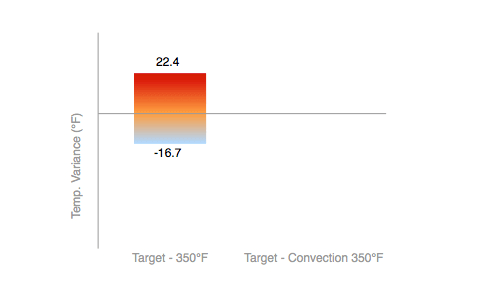
Oven "Margin of Error" in Temperature Variance: The oven is consistent at cool and mid-level temperatures, but inconsistent when operating at its warmest.
Broiler Performance
{{section_header}}{{section.name}}{{/section_header}}
In our tests, the broiler hit temperatures over 600°F in just under five minutes, which is incredibly fast for a broiler preheat. Obviously, it's not necessary to wait until a broiler has reached its full operating temperature to begin cooking your meat, but it's always good to have a machine that doesn't operate on the edge of its abilities.

Broiler Features
{{section_header}}{{section.name}}{{/section_header}}
The {{product.name}} also features a fully adjustable broiler that can be set to anywhere from the default 550°F to the 300°F, giving the user different options for the amount of radiant heat.
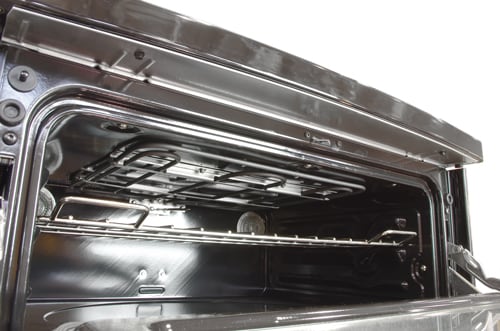
Overall Efficiency
{{section_header}}{{section.name}}{{/section_header}}
Since EnergyStar doesn't certify residential range efficiency, it's up to us to give users an inkling of the range's energy use. Efficiency isn't always a huge question for ranges, as a gas rangetop is oven less efficient, but the benefits of gas cannot be measured well for chefs who need the precision.
Anyway, we do check to see that the range uses the amount of energy the manufacturer says, and then compare it to the performance scores. Our watt verification test verified that the {{product.name}} uses the amount of power it says it does, except for the oven, where it used 500 more watts than the 3000 it was supposed to. That notwithstanding, the 8762 watts of the rangetop and 7490 of the oven and broiler elements is not bad for the performance it gave—especially that broiler's.
Features
{{section_header}}{{section.name}}{{/section_header}}
The {{product.name}} features a few slight changes to the typical four burner setup. Included here are a keep-warm element in the center and three dual ring elements. The dual ring elements accommodate a variety of different stoveware, as the pot should generally match the element.

The 5.7 cubic foot oven's main and best feature is the convection fan, which salvages a mediocre oven, turning it into one of the finest we've seen. The fan circulates the air well around the oven, providing more efficient heat transfer and shorter cook times. Additionally, the {{product.name}} has a sliding rack and a oversize rack in addition to the regular rack.
Besides the typical bake, broil, and the array of convection combinations with the various oven elements, there are also some additional odd features that some may enjoy. For instance, the dehydrate setting blows the convection fan at around 120°F—drying out whatever is inside the oven—and the slow cook setting cooks meat slowly like a crock-pot. The less-rare bread-proofing feature is also available, providing a warm ecosystem for the yeast to work.
Below the oven, a keep-warm drawer keeps things warm if the food gets done before dinner. Of course, it can also be used for storage as well.
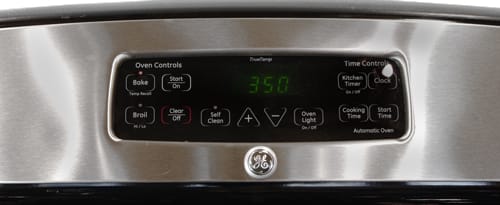
Like most ovens these days, the timer can do cook time, delay bake, and automatic off, which greatly enhance the timer's usefulness beyond a simple meter.
{{product.manufacturer_specs['Timer Photo']}}
Controls
{{section_header}}{{section.name}}{{/section_header}}
Unfortunately, the {{product.name}} has abandoned the classic staple of range convenience, the knob. Instead, {{product.brand.name}} graced us with the peculiar control panel with touch buttons. Furthermore, the touch buttons aren't immediately responsive, making the user hover over them for a moment and spend more time over a potentially scalding stove. To us, this is an example of technology failing to be useful. This odd system is certainly inferior to the simple knobs that tuned in the proper temperature without a thought.
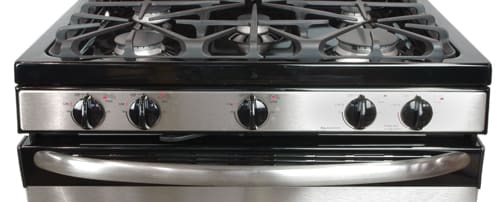
You can find the oven and broiler controls on the backsplash, on the large control panel. To one side, the array of oven and broiling options are available, and to the right a keypad is ready for temperature input.

Cleaning
Conclusion
{{product.vanity}}
Clearly, this is an odd oven. As a borderline luxury brand with all that European flair, the Electrolux entered our domain with expectations as high as its $2,000+ price tag, on sale.
The performance results were downright bizarre. For half the criteria, we saw a work of engineering genius worthy of our highest praise: the broiler, the convection oven, the precision at 350°F, the rangetop temperature range. But for the other half, we saw ineptitude as the oven had trouble hitting the right temperature and staying there for most settings, and the boiling results were less than impressive.
Unfortunately, we don't think this is a particularly good use whatever budget the perspective buyer has assigned for their kitchen. If this range were half the price, we would give it a sitting golf clap and remarked that if your use matches up with the {{product.model}}'s fortes, then go forth and buy this oven. But until then, our standards remain as high as the price.
Meet the tester
Ethan writes reviews and articles about science for Reviewed.com, and edits the Science Blog. He's originally from Vermont and thinks the bicycle and guitar are examples of perfected technology. Prior to Reviewed.com, he studied furiously at Middlebury College.
Checking our work.
Our team is here to help you buy the best stuff and love what you own. Our writers, editors, and experts obsess over the products we cover to make sure you're confident and satisfied. Have a different opinion about something we recommend? Email us and we'll compare notes.
Shoot us an email